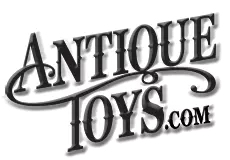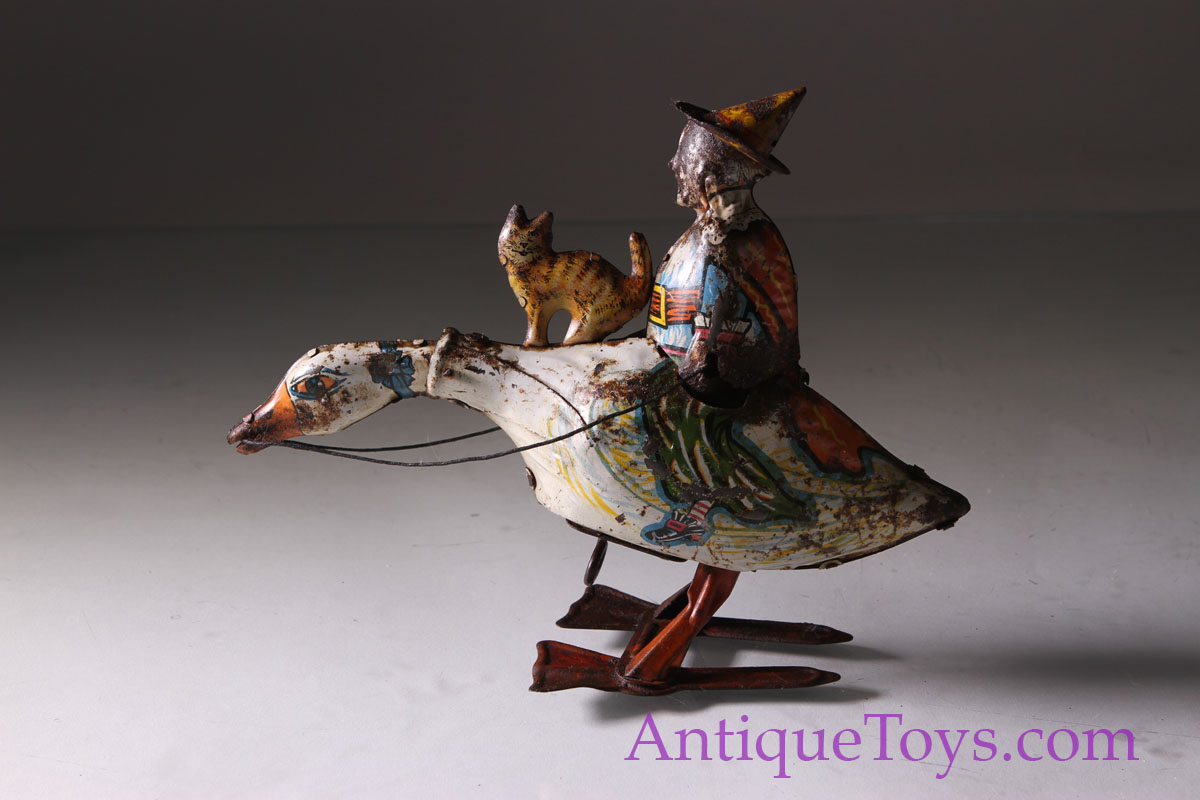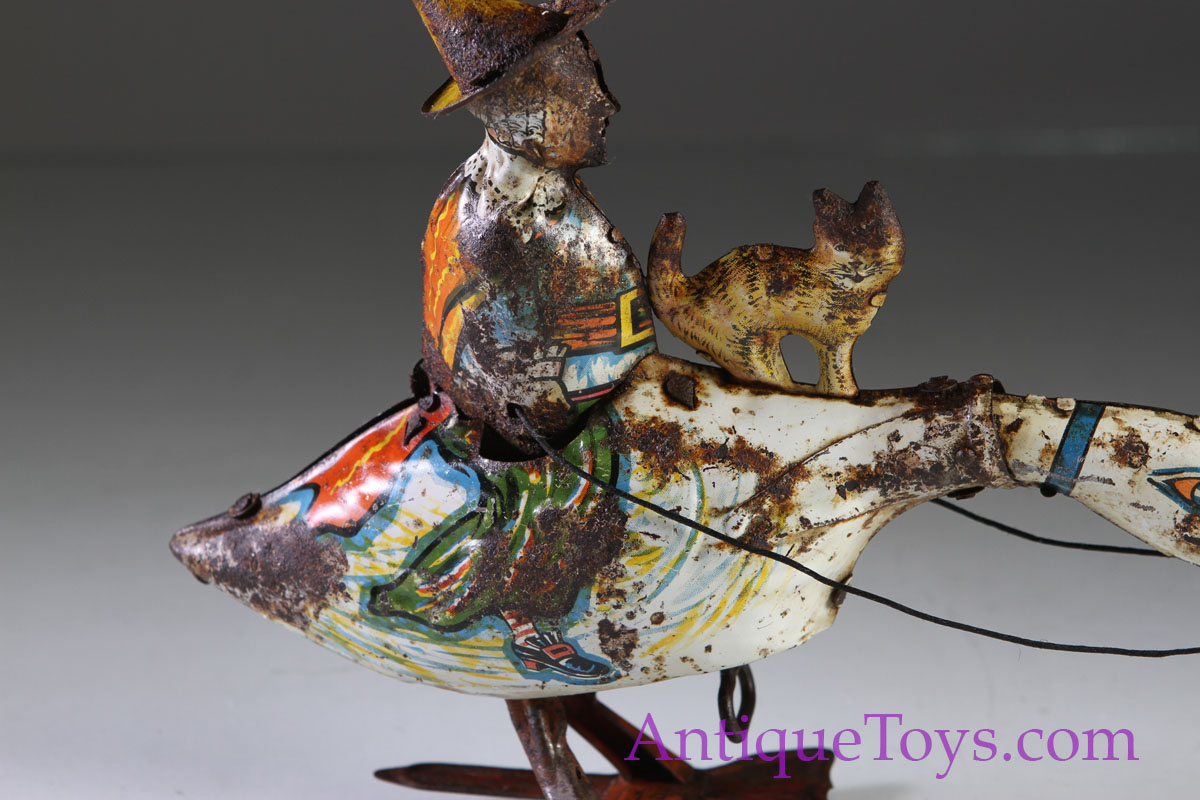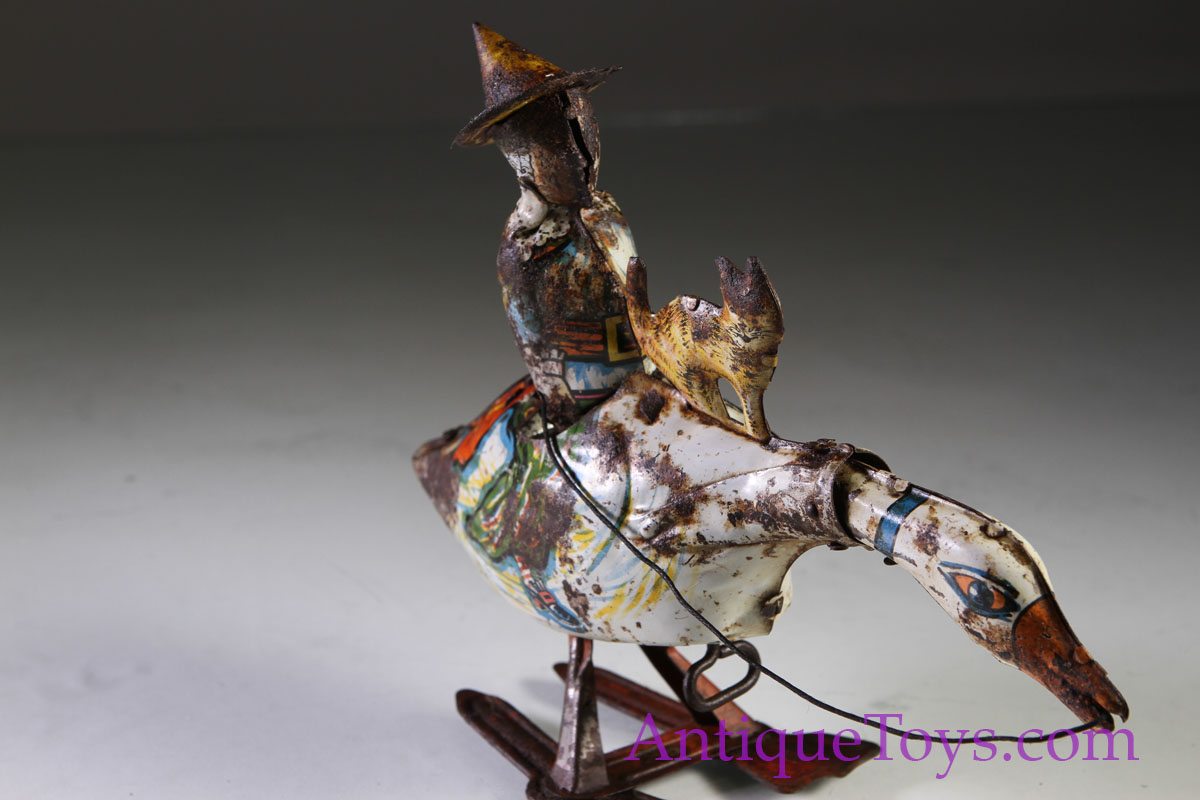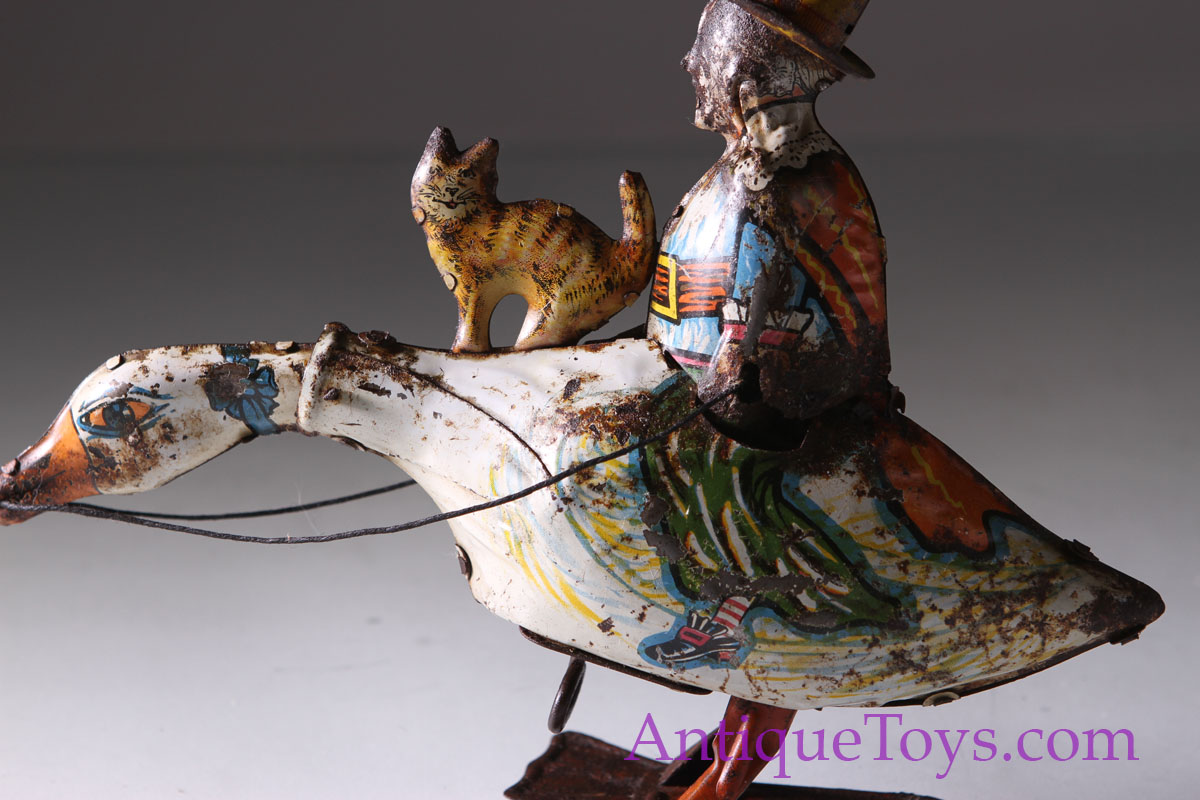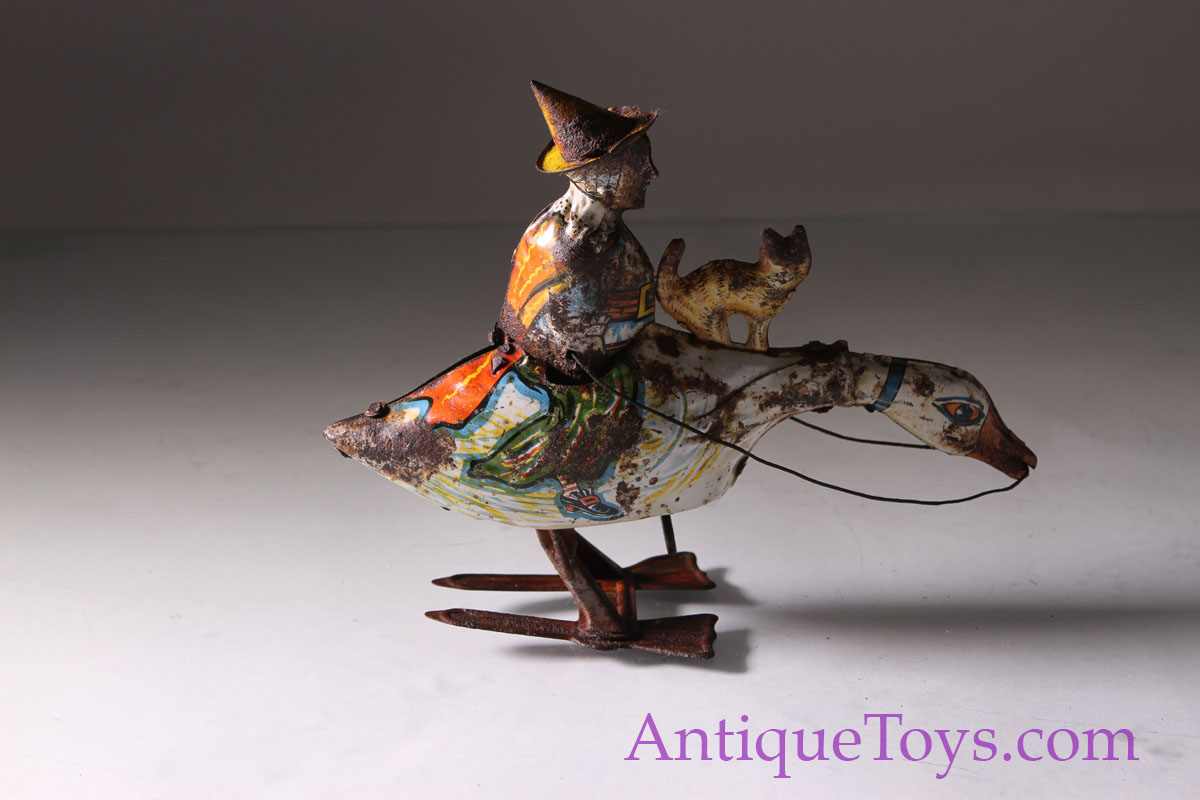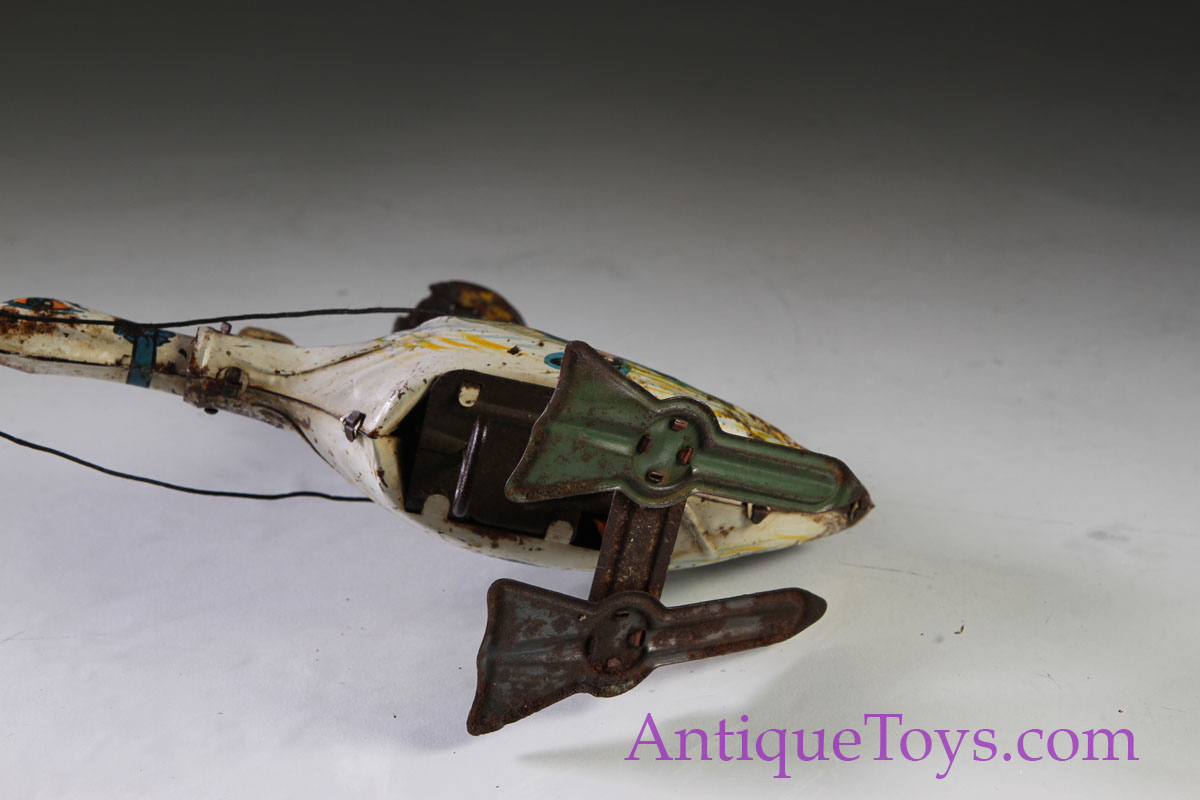Toy Relic – Mother Goose Tin Toy Windup for Sale *SOLD*
Toy Relic- Mother Goose tin toy windup for sale
From time to time we delve into uncharted waters and dig up oddities. Here we would like to offer a well used, well loved, rusted, artistic Mother Goose windup toy. It works with a bit of a nudge, and rocks its nose up and down with a limited goose hop. What a great toy!
The tin litho is to die for, wish it were perfect, but it is what it is and thick and lavish with color. Mother goose looks a bit like a witch with her cat, and the goose is relatively hefty with its saddle. The webbed feet are stout and still get the job of hopping done.
Even if you don’t care for this, feel free to drop us a line and let us know if we should continue to offer relics. Possibly the entire world is all about excellent condition toys…. possibly the world is ready to just have fun, or maybe there is an artistic vein we can tap into and share well loved toys to.
HEAR WHAT MA’AM GOOSE SAYS!
My dear little Blossoms, there are now in this world, and always
will be, a great many grannies besides myself, both in petticoats
and pantaloons, some a deal younger to be sure; but all monstrous
wise, and of my own family name. These old women, who never had
chick nor child of their own, but who always know how to bring up
other people’s children, will tell you with very long faces, that
my enchanting, quieting, soothing volume, my all-sufficient anodyne
for cross, peevish, won’t-be-comforted little bairns, ought to be
laid aside for more learned books, such as THEY could select and
publish. Fudge! I tell you that all their batterings can’t deface
my beauties, nor their wise pratings equal my wiser prattlings;
and all imitators of my refreshing songs might as well write a new
Billy Shakespeare as another Mother Goose–we two great poets were
born together, and we shall go out of the world together.
No, no my Melodies will never die,
While nurses sing, or babies cry.
—
The Poetry Foundation (.org) has a wonderful synopsis about Mother Goose, giving a glimpse into how important this figure was in the early 1900’s:
“Mother Goose is often cited as the author of hundreds of children’s stories that have been passed down through oral tradition and published over centuries. Various chants, songs, and even games have been attributed to her, but she is most recognized for her nursery rhymes, which have been familiar with readers of all generations. Her work is often published as Mother Goose Rhymes.
Despite her celebrated place in children’s literature, the exact identity and origin of Mother Goose herself is still unknown. Some believe that the original Mother Goose was a real woman who lived in Boston during the later half of the 17th century. After being widowed by Isaac Goose, a woman named either Elizabeth Foster Goose or Mary Goose (depending on sources) moved in with her eldest daughter, entertaining her grandchildren with amusing jingles which quickly gained popularity with the neighborhood children. According to the legend, her son-in-law, a publisher, printed her rhymes, and thus the reputation of Mother Goose was born.
However, literary historians often dismiss the possibility of a Bostonian Mother Goose, as the existence of various French texts that refer to Mother Goose at a much earlier date make the American legend improbable. These texts, dating as early as 1626, even show that the French terms “mere l’oye” or “mere oye” (Mother Goose) were already familiar to readers and could be referenced. The figure of Mother Goose may even date back as the 10th century, according to other sources. In an ancient French legend, King Robert II had a wife who often told incredible tales that fascinated children.
Regardless of Mother Goose’s origins, Charles Perrault was the first to actually publish a Mother Goose collection of rhymes and other folk tales in 1697, essentially initiating the fairy tale genre. With the subtitle Les Contes de ma Mère l’Oie (Tales of my Mother Goose), the collection quickly gained popularity all over France. By 1729, Perrault’s collection had been translated into English, in the form of Robert Samber’s Histories or Tales of Past Times, Told by Mother Goose. Samber’s volume was eventually republished in 1786 and brought to the U.S.”
Additional information
| Weight | 1 lbs |
|---|---|
| Dimensions | 8 × 8 × 8 in |
